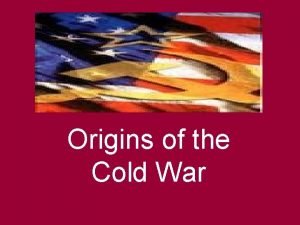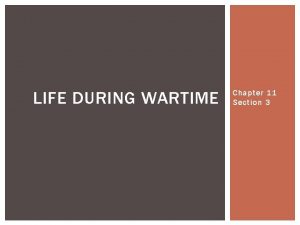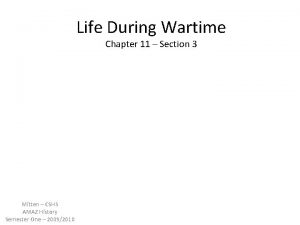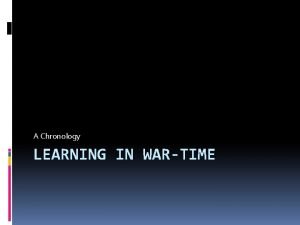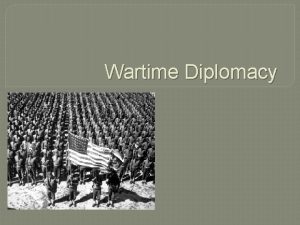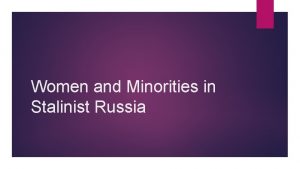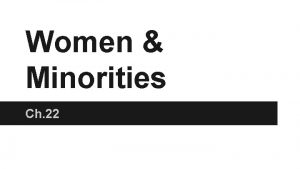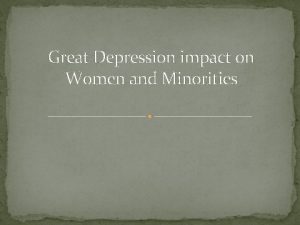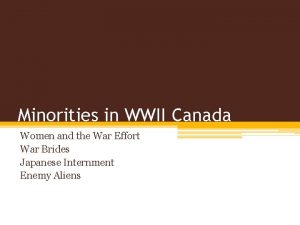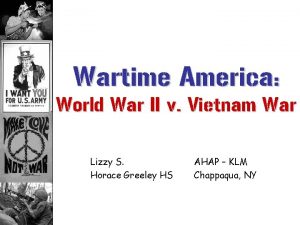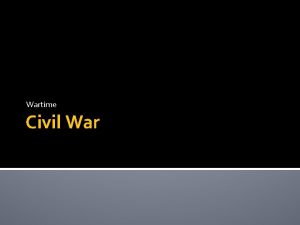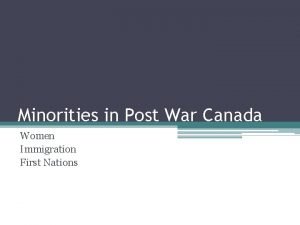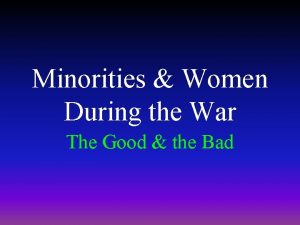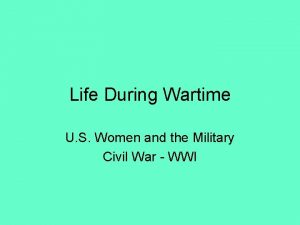Women Minorities And War The Impact Of Wartime














- Slides: 14

“Women, Minorities And War: The Impact Of Wartime Mobilization On Political Rights in Europe, 1900 -1955 ” Interstate War Political Rights David Rousseau and Bruce Newsome

Relationship to Prior Work Project #1 Democracy and War: Forthcoming Stanford. Democracy Project #2 “Identifying Threats and Threatening Identities”: Under Review. Shared Identity Project #3 Military Conflict and Political Rights Military Conflict (-) War Threat Perception Democracy Identity

Conflicting Hypotheses Tilly: War Made the State. But What Type of State? • Garrison State School War (-) Political Rights • Extraction School War (+) Political Rights

Impact of War on Specific Groups Direct vs. Indirect Participation Majority Females Minority Males

Measuring Political Rights • Individual Rights I) Right to Hold Office II) Right to Form Political Parties III) Right to Vote in National Elections IV) Freedom of Expression • Collective Rights I. Free and Fair Elections II. Legislative Power Over the Executive III. Rule of Law IV. Military Intervention in Society Code for Majority Males, Women, and Minority Males

Example of Political Rights Coding Rules III) Right to Vote in National Elections: 3) Unrestricted: All adults in the sub-population have the right to vote in national elections. 2) Slightly Restricted: Although most adults have the right to vote in national elections, there are some restrictions. These restrictions affect no more than 20% of the sub-population. 1) Substantially Restricted: The right to vote in national elections is severely curtailed. Due to numerous types of restrictions, the percentage of the sub-population eligible to vote in national elections falls between 20% and 80%. 0) Extremely Restricted: The right to vote in national elections is restricted to less than 20% of the sub-population.

Research Design • New Data Set: 24 European States, 1900 -1955 • Measuring Military Conflict a) Cumulative Battle Deaths and Number of Militarized Disputes b) Lagged Troop Mobilization • Competing Explanations a) Domestic & International Suffrage Movement b) Diffusion of Ideas c) Economic Development d) Power of the Left in Society

Bivariate Results: Collective Rights Free and Fair Elections ---------------------------Decreased No Increased Rights Change Rights ----------Peacetime 2% 97% 1% Wartime 8% 89% 3% Just After War 4% 88% 8% N=1141; Chi Square (4)=47. 0; Probability =. 000 Similar: Rule of Law, Legislative Power, and Military Intervention

Graphical Results: Individual Rights


Conclusions • Conclusions: 1) During War Political Rights Contract 2) After High Mobilization Political Rights Expand 3) Direct Participation by Women Not Required • Future Research 1) Expand the Spatial & Temporal Domain 2) Greater Differentiation of Minorities 3) More Sophisticated Modeling of the “J-Curve” 4) Case Studies and Oral Histories

OLD SLIDES BELOW

Relationship to Prior Work Project #1: Democracy and War: Institutions, Norms, and the Evolution of International Conflict. Forthcoming Stanford. Project #2: “Identifying Threats and Threatening Identities: The Social Construction of Realism and Liberalism. ” Under Review. Project #3: Military Conflict and Political Rights

War and State Building Technological Innovation in Warfare Tactical Innovations in Warfare Expansion in the Size of Armies Mobilize Fiscal Resources: Expand Tax System Desperate Need for Revenue Mobilize Human Resources: Recruit Mercenaries and later Conscripts Expand Coercive Apparatus
 A wartime alliance begins to erode
A wartime alliance begins to erode Chapter 11 section 3 life during wartime
Chapter 11 section 3 life during wartime Chapter 11 section 3 guided reading life during wartime
Chapter 11 section 3 guided reading life during wartime Wartime remnants clean-up program
Wartime remnants clean-up program Learning in war time
Learning in war time Yoshiko imamoto
Yoshiko imamoto Chapter 7 lesson 4 the war's impact
Chapter 7 lesson 4 the war's impact Toward civil war lesson 3 secession and war
Toward civil war lesson 3 secession and war War at home vs war abroad madison
War at home vs war abroad madison Description
Description The cold war lesson 1 the cold war begins
The cold war lesson 1 the cold war begins Reconstruction plans venn diagram
Reconstruction plans venn diagram Why did josette dugas want to go to war
Why did josette dugas want to go to war Ich sein
Ich sein Study jams force and motion
Study jams force and motion
